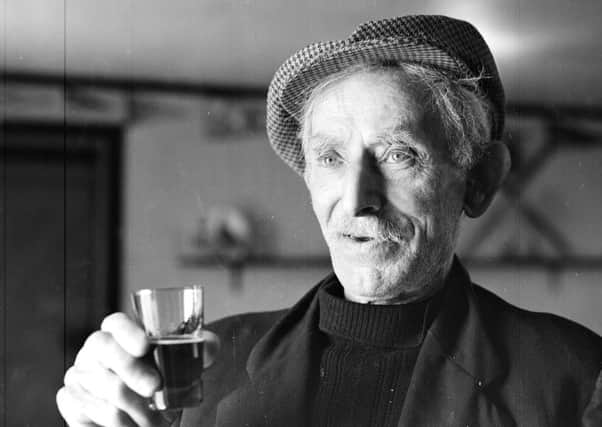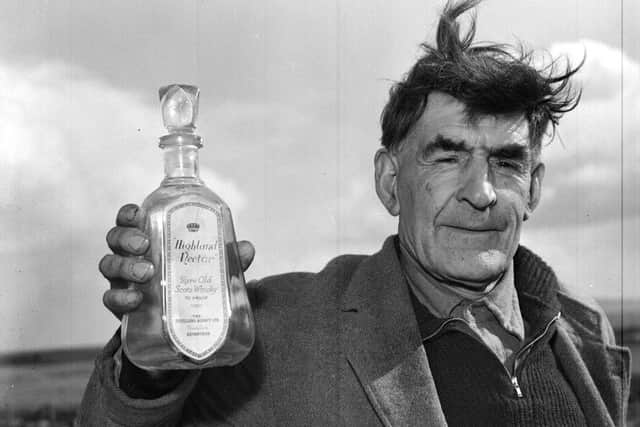On this day 1941: SS Politician sinks unleashing ‘Whisky Galore’


The merchant ship SS Politician wrecked in strong gales off Eriskay on February 5, 1941 with the local operation to seize the ship’s bounty - and the cat and mouse game between islanders and authorities - becoming the stuff of screen and stage following Compton Mackenzie’s 1947 novel, Whisky Galore.
Following the wreck, unofficial salvage parties started to form, with reports of men donning their wives dresses to prevent their own clothes becoming stained by the ship’s oil, according to accounts.
Advertisement
Hide AdAdvertisement
Hide AdHundreds of cases were successfully removed from the ship at a time or wartime rationing with some crofters reportedly burying the bottles and sowing oats over the top to conceal the cargo.


Even in recent years, the stricken ship, whose hold also contained cotton, stoves, cutlery, medicines, baths and biscuits - has still released its treasures with eight bottles recovered following the wreck fetching £4,000 at auction in 1987. Two of them later sold at auction in 2013 for more than £12,000.
Six months after the ship, which set sail from Liverpool, hit sandbanks off Eriskay news of the displaced cargo started to filer through to the press.
On August 11, 1941, The Scotsman ran a story under the headline “Whisky from Wreck - Secret That Could Not Be Kept.”
A series of court cases at Lochmaddy Sheriff Court led to several crofters being jailed for up to two months for offences against the excise laws.
The story said: “Her cargo included several thousand cases of the best Scotch whisky intended for the American “ millionaire” market .
“When news of the shipwreck spread, boats went prospecting from the islands round about , even from as far south as Tobermory , and large consignments of the whisky were cached down in barns and byres-along the coast .
“Some crofters buried bottles in their crofts and sowed the oats over the top of them .
Advertisement
Hide AdAdvertisement
Hide Ad“But there was too much whisky jn circulation for it “to remain dark” even though the Hebridean crofter has a great gift of keeping mum on occasions.
“Tales began to filter to the mainland of the abounding hospitality of the Isles. Travellers brought back news of whisky like nectar mellow and long matured .
“It was said to be changing hands at 5s a bottle.”
According to the report, the Ministry of Shipping and Customs authorities were alerted to the missing cargo with a night watchman placed on the wreck with a “comb-out in the Isles for contraband” following.
Islanders, who had relied on the sea for survival since the first man arrived on its soil, did not generally regard taking the whisky as stealing.
For them, the rules of salvage meant that once the bounty was in the sea, it was theirs to recover.
This, however, was not the view of the local customs officer, Charles McColl, who was incensed at the thievery as he saw it.
Not a penny of duty had been paid on any of the whisky and he pursued this loss to the public purse with vigour.
McColl was angered by ‘lenient’ sentences being handed out by the courts but the police believed that islanders were being harassed over the cargo, according to accounts.
Advertisement
Hide AdAdvertisement
Hide AdUltimately, McColl was granted permission to blow up the hull of the boat in order to destroy its contents.
The islanders watched this extraordinary action with Angus John Campbell perhaps summing up the view of most.
“Dynamiting whisky. You wouldn’t think there’d be men in the world so crazy as that,” he said.
In 2001, it emerged that Hold Number 5 of the ship contained not only whisky but also 290,000 10-shilling notes destined for the then colony of Jamaica.
Then the currency was worth around £145,000. Today, taking inflation into account, the money would be worth in the region of £7.2m.
According to accounts, authorities believed the money had been ruined by water and fuel and then, presumably, swept out to sea.
Then it was recorded that some of the notes were found in Benbecula, around 25 miles north of the shipwreck.
By June 1941, banks in Liverpool started to receive water-damaged Jamaican 10 shilling notes with the currency then emerging in London, Stoke-on-Trent and the north of Scotland
Advertisement
Hide AdAdvertisement
Hide AdOf 290,000 notes lost to the wreck, just over 2,300 had turned up in banks around the world by 1958. As a result, the series of Jamaican bank notes known to have been on the SS Politician was cancelled and reprinted in a different colour.
